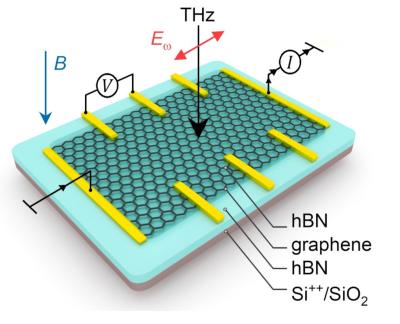Researchers from Germany's University of Regensburg, Russia's MIPT, and U.S-based University of Kansas and MIT have discovered an abnormally strong absorption of light in magnetized graphene. The effect appears upon the conversion of normal electromagnetic waves into ultra-slow surface waves running along graphene. The phenomenon could help develop new ultra-compact signal receivers with high absorption efficiency for future telecommunications.

Everyday experience teaches us that the efficiency of light energy harvesting is proportional to the absorber area, as indicated by solar panel "farms" covering large areas. But can an object absorb radiation from an area larger than itself? It appears that way, and it is possible when the frequency of light is in resonance with the movement of electrons in the absorber. In this case, the area of radiation absorption is on the order of the light wavelength squared, although the absorber itself can be extremely small.



